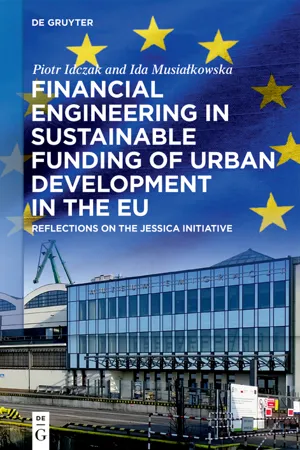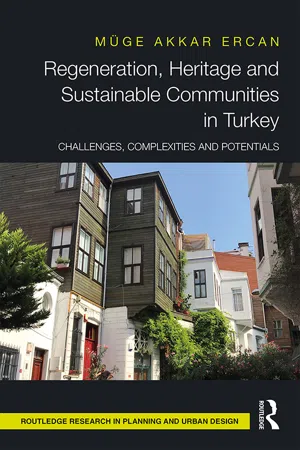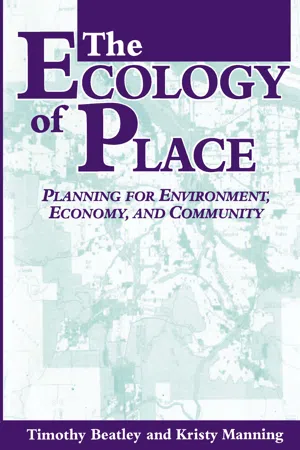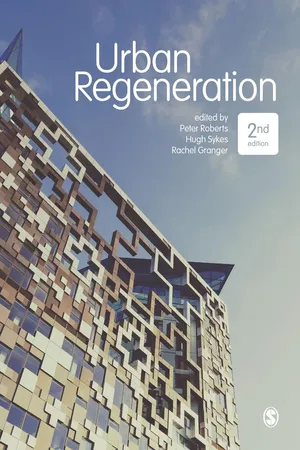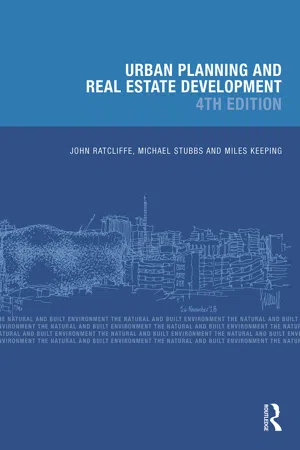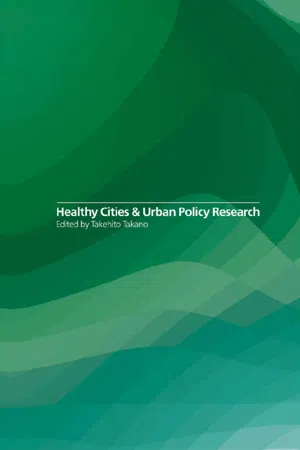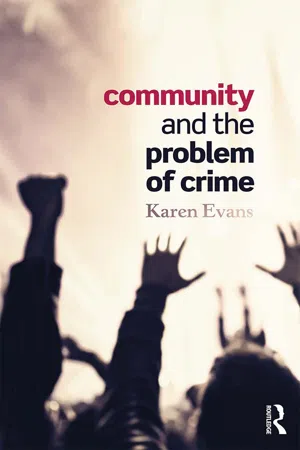Geography
Regenerating Places
"Regenerating Places" refers to the process of revitalizing and improving the physical, economic, and social aspects of a specific location. This often involves urban renewal, environmental restoration, and community development initiatives aimed at creating more sustainable and vibrant places. The goal is to enhance the overall quality of life and opportunities for the people living in these areas.
Written by Perlego with AI-assistance
Related key terms
Related key terms
1 of 4
Related key terms
1 of 3
8 Key excerpts on "Regenerating Places"
- eBook - ePub
Financial Engineering in Sustainable Funding of Urban Development in the EU
Reflections on the JESSICA Initiative
- Piotr Idczak, Ida Musiałkowska(Authors)
- 2022(Publication Date)
- De Gruyter(Publisher)
de Magalhães, 2015 ). Regeneration interventions realise the need to counter localised market failures and to achieve an equity objective (regarded as social cohesion). These actions lead to attaining additional social, economic and environmental outputs and outcomes which would otherwise not have occurred or which would have been yielded at an unsatisfactory level.Of particular importance in this context is a holistic approach. This stipulates that any regeneration initiatives should be implemented by bringing a wide range of social, economic and environmental considerations into the decision-making process on an integrated programme of urban development. The idea considers the regeneration programme as relating to a complete city system, and rejects a piecemeal approach. To address the issues resulting from this comprehensiveness, the needs and aspirations of local residents to redevelop their locality are supposed to be met in the wake of the coordination of a number of private and public sector actions (Couch, Sykes, & Börstinghaus, 2011 ). Moreover, the formulation of solutions to the problems of deprived urban area residents and people living in the neighbourhood should take place by way of a common vision, agreed objectives and priorities, pooled expertise and common decisions for the allocation of resources. In this respect it should also be underlined that, following de Magalhães’s view (2015) , the core understanding of what socio-economic decline in cities means must be seen as social, economic and environmental problems of a city (locality) rather than as social, economic and environmental problems that happened to take place in that locality. Therefore urban regeneration through holistic approach policies seeks to address the problems of cities in all their multiple dimensions. It is then characterised by agendas of inclusiveness, multi-agency partnerships, and a shift from government to governance (J. Evans & Jones, 2008 - eBook - ePub
Regeneration, Heritage and Sustainable Communities in Turkey
Challenges, Complexities and Potentials
- Muge Akkar Ercan(Author)
- 2019(Publication Date)
- Routledge(Publisher)
raison d’être for conservation in all senses’ (Avrami and Mason, 2000: 4). Hence, protecting poor, vulnerable communities living and working in deprived historic urban quarters in accordance with their multifaceted needs, aspirations and values, and ultimately turning them into SCs is also indispensable for sustainable urban conservation. Therefore, particularly in historic neighbourhoods, the difficult task of conservation initiatives is to develop strategies not only ensuring the continuing contribution of heritage to the present and the future through the thoughtful and intelligent management of change responsive to the heritage environment and collective needs, but also preserving the fundamental elements of the social environment. If such strategies find ways of reconciling the needs, aspirations and concerns of local communities and the conservation of the heritage geographies with multiple values, they are likely to develop more equitable and sustainable solutions to the problems of historic quarters.The effectiveness and success of (sustainable ) regeneration endeavours in heritage geographies, therefore, depend on three main conditions: first, the extent to which they protect vulnerable, poor communities by meeting their economic, social, cultural, environmental, health and political needs, ultimately turning them into SCs; second, the extent to which they restore heritage geographies by adopting present needs without risking the loss of inherited built resources with their interrelated sets of values for future generations; and finally, the extent to which they achieve both objectives in a sustainable and balanced fashion. The understanding of community needs is elaborated further in the next sections.Relational understanding of regeneration spaces in cities
In an era of globalisation and neoliberal urbanism, Harvey (2016: 137) defines urbanisation as ‘a spatially grounded social process in which a wide range of actors with quite different objectives and agendas interact through a particular configuration of interlocking spatial practices’. It produces numerous artefacts, such as constructed spaces and resource systems, as well as institutional arrangements, legal forms, political and administrative systems and hierarchies of power (Harvey, 2016). Indeed, spaces are ‘interrelated entities’ that are open to and engaged with other spaces and places. They are ‘relational constructs’ made by biological, physical, economic, social and cultural processes and relations established between entities of various kinds (Murdoch, 2006). According to Harvey (1996), discrete spaces and places need to be regarded as dynamic configurations of ‘relative permanences’. The resonances of the relational approach to urban regeneration are therefore twofold: first, to conceptualise regeneration spaces as the notions of ‘relative permanence’ and ‘perpetual perishing’ in a time–space relation; and second, to conceive them with reference to the spatio-temporal dynamics; i.e. spatial changes in time. By conceiving regeneration spaces as ‘semi-permanent’ with a spatio-temporal perspective rather than ‘static’ and ‘contained’ in time moving in one directional and linear way, it is possible to discover the ‘flow’ and ‘fixity’ nature of spaces. - eBook - ePub
The Ecology of Place
Planning for Environment, Economy, and Community
- Timothy Beatley, Kristy Manning(Authors)
- 2013(Publication Date)
- Island Press(Publisher)
There are, unfortunately, reasons to be skeptical about our ability to meet these challenges, given current global trends of population growth, consumption, and environmental degradation. Yet at local and regional levels, the higher standards implied by sustainability are not only more conceivable, but necessary from a practical as well as an ethical standpoint. Indeed, there are encouraging examples of efforts to restore the environment, or at least important pieces of the environment. These range from recreating prairies in the Chicago area to reintroducing the red wolf in North Carolina to the reforestation efforts under way in a number of places (see Baldwin, DeLuce, and Pletsch, eds. 1993; for a good discussion of ecological restoration as a new perspective on the relationship between humans and nature, see Jordan 1993).Sustainable Places Strive for a High Quality of Life
To be a viable paradigm, sustainability must incorporate a strong social component. Along with ecological issues, then, sustainable communities are equally concerned with social and human sustainability—creating and supporting humane living environments, livable places, and communities that offer a high quality of life. Characterizing the social dimension becomes much vaguer and more subjective than defining the environmental or ecological dimension; we cannot rely as readily on such measures as natural carrying capacity. Terms such as livability and quality of life, in turn, beg for definition and description and, ultimately, may be up to the community itself to clarify.It seems fairly clear, however, that current patterns of urban development in the United States are becoming more socially and psychologically stifling. We have created, or allowed to be created, urban and suburban places that will not stand the test of time. Increasingly, downtown urban areas are devoid of activity after 5:00 P.M.; meanwhile, suburban and edge cities lack charm and a sense of place and depend heavily on the automobile. The zealous separation of land uses promoted by conventional zoning and the scattered, sprawling development patterns that characterize much of our contemporary landscape require an increasingly dysfunctional transportation system that is plagued with traffic congestion and long work commutes (Fig. 2.1 - eBook - ePub
Fitting into Place?
Class and Gender Geographies and Temporalities
- Yvette Taylor(Author)
- 2016(Publication Date)
- Routledge(Publisher)
The (mis)management of resources and uneven effects suggests again the vulnerabilities of particular people and places within the logics of regeneration/degeneration. Spatial segregations are renewed rather than seamlessly transformed, where, for example, rural regenerations mean something quite different from urban regeneration – in the case of ex-mining communities this included being ranked as ‘deprived’ and being in receipt of European Social Funds to simply ‘get by’ rather than to get ahead culturally or economically. Regeneration as a policy itself produces spatialised orientations of and for accumulative, ‘active’ citizens as opposed to more ‘pragmatic’ citizens, with the latter often being absented from ideas of ‘city publics’ (Watson 2006, Back 2007): such orientations, as dispositions and feelings, are disproportionately aligned and/or at odds with regional change. Even well-resourced residential and leisure areas were at times positioned as going too far, as material improvements was repositioned as a loss by and for middle-class subjects who could articulate a claim as losing out, being ‘crowded out’ by the wrong kind of ‘influx’; often this middle-class claim was expressed an aesthetic degeneration of their landscapes. This chapter explores the moral and material positions of ‘improvement’ and the proximities and distances that are invoked through, for, and by ‘improving’ people/ places. Distance invokes both time and place and certain geographical locations were viewed as moving too fast, colliding past and present terrain, in becoming something different: such changes were variously perceived as assets or failures in ‘crowding out’ the once protected, authentic, middle-class terrain - eBook - ePub
- Peter Roberts, Hugh Sykes, Rachel Granger, Peter Roberts, Hugh Sykes, Rachel Granger(Authors)
- 2016(Publication Date)
- SAGE Publications Ltd(Publisher)
Having identified and traced the evolution of some of the major issues and factors that have been evident in previous eras of urban change and policy, the preceding section of this chapter isolated six important themes which represent the origins and outcomes of past problems and policy responses. Although they reflect the enduring and continuous nature of economic, social and physical change, they do not yield, by themselves, the basis for a comprehensive definition of urban regeneration. In order to help to construct a working definition of urban regeneration it is also necessary to identify emerging areas of concern and likely future challenges. As was argued above, the most important of these challenges is that which is represented by the need to ensure that all areas of public and private policy operate in accord with the economic, social, environmental and political principles embodied in the notion of sustainable development.A Definition of Urban Regeneration
Although the very nature of regeneration makes it a constantly evolving and varied activity, the six themes provide the basis for an initial definition of urban regeneration as:comprehensive and integrated vision and action which seeks to resolve urban problems and bring about a lasting improvement in the economic, physical, social and environmental condition of an area that has been subject to change or offers opportunities for improvement.This somewhat ideal definition encompasses the essential features of urban regeneration identified by Lichfield, who points to the need for ‘a better understanding of the processes of decline’ and an ‘agreement on what one is trying to achieve and how’ (Lichfield, 1992: 19); by Hausner, who emphasises the inherent weaknesses of approaches to regeneration that are ‘short-term, fragmented, ad hoc and project-based without an overall strategic framework for city-wide development’ (Hausner, 1993: 526); by Donnison in his call for ‘new ways of tackling our problems which focus in a co-ordinated way on problems and on the areas where those problems are concentrated’ (Donnison, 1993: 18); and by Diamond and Liddle (2005) who emphasise the need for action across all relevant policy spheres.The definition given above represents urban regeneration designed and delivered in a total package and to the final point of completion. However, as Tallon (2010) observes, the reality is that regeneration often operates in a fragmented manner and not all problems are solved. - eBook - ePub
- John Ratcliffe, Michael Stubbs, Miles Keeping(Authors)
- 2021(Publication Date)
- Routledge(Publisher)
The Urban Task Force Report of 1999 promoted a planning system that valued and promoted quality (in design), economy (in wealth creation), environmental responsibility (thus sustainability), governance (in other words, fair processes and engagement), and society (social benefits and a fairer society). The compact city was at the core of this, but we must not lose sight of the social and environmental components of sustainability – design must deliver or relate to all of these. Thus, the planning system achieves sustained investment to target economic decline and social exclusion, as well as promoting energy-efficient buildings, an awareness of biodiversity, housing on recycled land, the promotion of participatory democracy through urban government, and priority given to social well-being to ensure neighbourhoods have a balance of tenure and income groups proportionate to housing demand. The Town and Country Planning Association has a long pedigree of promoting urban extensions and new settlements (see TCPA 2007).Urban regeneration is something of an umbrella term to cover a variety of topics, including the economics of development, the physical improvement of the environment, including environmental actions, and the future management of a community and its citizens. Economic regeneration deals with the funding of infrastructure (often public transport upgrades and new projects) and frequently involves incentives in a range of financial and fiscal measures to encourage the development of vacant and derelict land (e.g. tax relief for such regeneration projects). Other cognate areas also cover the need to address market failures, in which the collapse of market activity is attributed to chronic environmental problems and poverty. Although the infamous and much criticised national Housing Pathfinder (see later in this chapter) offered a simple solution of demolish and start again, the real question and challenge here rest with carefully crafted market interventions. That means budgets of public money to acquire land for development and promote and discharge its regeneration and to fund physical improvements – open spaces/green infrastructure, streets and public realm, health, and community infrastructure. Although public–private joint working is the goal, it remains the case that the public purse, combined with the use of compulsory purchase powers to assist land assembly, renders local government and the agencies of national government (such as Homes England) key players in kick-starting the process. Recent examples include the new communities of Cranbrook (near Exeter) and Chalgrove (near Wallingford, South Oxfordshire).The role of public bodies in assembling sites and connecting them through public transport initiatives and new delivery mechanisms is not new, but the essential fulcrum link between infrastructure and development must be maintained. The development corporation is a traditional model in which a public agency is vested with powers to grant planning permission, set a vision, link up to transport, and fund favoured development. This was used in the post-war construction of British new towns, famously Milton Keynes (1967–92 for such status). Regeneration development corporations followed a similar path with their creation in London Docklands and Merseyside (1981); the Black Country (West Midlands), Cardiff Bay, Teesside, Trafford Park Manchester, and Tyne and Wear (1987); Central Manchester, Leeds, and Sheffield (1988); and finally Bristol (1989). - eBook - ePub
- Takehito Takano, Takehito Takano(Authors)
- 2003(Publication Date)
- Routledge(Publisher)
Closing resource cycles Ecosystems thinking emphasises the region as a complex system characterised by flows of energy, nutrients, materials and other resources which include finance and human resources. Working towards closing cycles by integrating flows and minimising waste will promote sustainability at the urban and regional level. The notion of ecological footprinting may assist the process (Rees 1998).- Designing for sustainability There is a growing need for transforming the design of buildings and products to a sustainable future incorporating the principles of sustainability. Similarly the planning and urban design of parts of the whole of cities requires new approaches whether it be new buildings, conservation, the renewal and creation of public space or the retrofitting of areas both within and on the periphery of cities.
- Management, governance and capacity-building Sustainable urban and/or regional management will require a range of tools addressing environmental, social and economic concerns to assist integration of policy and practice. Also required will be a reconsideration of the processes and practices of governance, including the institutional arrangements and capacities of different levels of government and agencies, and the roles and operation of partnerships between public and private sectors, NGOs and citizens. Learning from Agenda 21 processes is crucial to future forms of governance (CEC 1996).
From experience in Europe it is suggested that increasingly the relationships between urban and regional environments and economies will be of over-riding importance. Themes for exploration and development in relation to this identified by Roberts (1995) include: - eBook - ePub
- Karen Evans(Author)
- 2015(Publication Date)
- Routledge(Publisher)
4 REGENERATING COMMUNITIESWhile the preceding chapter explored ways in which communities have been considered as disordered places, this chapter looks at different attempts which have been made to construct socially ordered places, starting with the physical regeneration of cities and neighbourhoods and then moving on to consider the move to social and community regeneration which predominated from the 1970s. In 1995, Lacey and Zedner wrote that:[s]ocial order ... cannot merely be protected and maintained but ... must, rather, be actively constructed and managed if the social and psychological costs of insecurity are to be minimized. (1995:301)Many different plans have been proposed as the way to induce necessary changes, but as this chapter will reveal, each plan has been constrained by the historical and political period in which they have been constructed (Fainstein and Campbell 2006:2). From the 1970s, the idea that local and national state interventions into the life of communities were a necessary part of urban governance was established, whereas prior to this point interventions tended to be designed and implemented by individual philanthropists and progressive thinkers eager to establish some kind of ‘utopia’ amongst urban chaos. The move from benign interference to full-fledged state intervention will be considered over the next few pages.Shaping the built environment
The poor quality of life and environmental conditions which persisted in newly industrialised cities were, as soon as they took physical form, considered a cause for concern, and they have remained a focus of attention ever since. However, reformers have looked at the problem differently in subsequent historical periods. Initially, reformers were exercised with improving the built environment of the newly emerging cities in order to minimise the effects of poor environmental quality on the physical and psychic health of the urban population. The problems created by industrialisation raise issues concerning sanitation, pollution, overcrowding and substandard housing, and the early reformers looked for solutions in the architecture of the city. In Victorian Britain, which is often held up as a great example of urban reform, valiant attempts were made to provide sewerage systems and clean water to the cities, to build a public infrastructure of roads, streets and housing, and in perhaps the first example of situational crime prevention, to install street-lighting and to build a policing structure which would improve the safety of city streets at all times. Urban design and re-design, however, is never neutral and value-free; instead it can be read as an expression of the way social problems are understood and of a vision of what social relations should look like. In Victor Hugo’s words, architecture is a ‘granite book’ in which the dominant ideas of each generation are written. In that respect, urban planning is value-laden and reflects the moral and political perspective of the planner. In addition, the built environment is the physical embodiment of relations of power – economic, political and social which prevail. It is rare that the built environment expresses an alternative vision for society, although utopian visions of the ‘good’ city and community have, and continue to be, presented as possible futures in fiction and non-fictional accounts alike; see, for example, the final chapters of both Harvey (2000) and Ferrell (2001).
Index pages curate the most relevant extracts from our library of academic textbooks. They’ve been created using an in-house natural language model (NLM), each adding context and meaning to key research topics.
Explore more topic indexes
Explore more topic indexes
1 of 6
Explore more topic indexes
1 of 4
